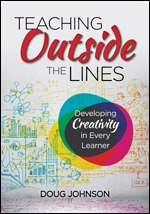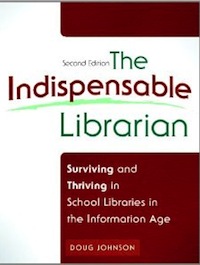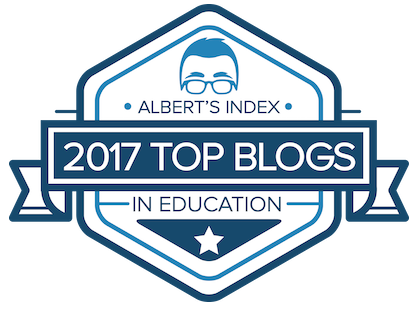David Warlick’s Back to School Letter
 Thursday, August 25, 2005 at 06:26PM
Thursday, August 25, 2005 at 06:26PM I would encourage you to read David Warlick’s
Our Schools Are Leaking
Very thoughtful stuff.
 All banner artwork by Brady Johnson, professional graphic artist.
All banner artwork by Brady Johnson, professional graphic artist.
My latest books:


The Blue Skunk Page on Facebook

 Thursday, August 25, 2005 at 06:26PM
Thursday, August 25, 2005 at 06:26PM I would encourage you to read David Warlick’s
Our Schools Are Leaking
Very thoughtful stuff.
 Tuesday, August 23, 2005 at 06:40PM
Tuesday, August 23, 2005 at 06:40PM With federal reading improvement dollars flowing into some of our Title One schools, there’s been an increase in the use of computerized reading programs. Our district uses Read Naturally. Its website claims: Read Naturally continues to provide teachers with all of the tools they need to address the fluency needs of their students.
I sincerely hope not.
Granted, I am not a struggling reader or an ESL student. But I practiced with this computer-based reading tutorial last week. It had been a while since I had used such a creature and was expecting some dramatic improvements in machine-based reading instruction from what I had experienced four or five years ago. I was set up as a 5th grade, high-achieving student, and worked on a lesson about Daniel Boone – one of my favorite historical characters. The program made me review vocabulary, read the very dull story about three times, have the very dull story read to me three times (couldn’t skip), and gave me a low level quiz on my comprehension. I did a small amount of writing to summarize the content. I spent about an hour on a single passage of about 500 words. Boring, boring, boring.
You want to kill a kid’s love of reading quicker than Dan’l could kill a b’ar, this is the product to use. I ruefully reflected on how much better giving a kid James Daugherty’s fine book Daniel Boone would be and sit with him and read along.
I suppose in their place - in schools with sub par teachers, and with a very select number of students - programs like Read Naturally may do some good. But for the vast majority of kids, using these expensive basal-readers-on-a-disk run the real chance of creating negative associations with both reading and computer use.
All media specialists should be promoting another means of building student reading skills – Personal Voluntary Reading. It’s effective and builds not just reading skills, but the desire to read. Please purchase, read and share Stephen Krashen’s book The Power of Reading with your teachers and reading specialists. My review.
To me it seems the logical sequence in working with kids and reading is to instill the desire to read long before trying to teach reading skills. Good stories, good storytellers, and lots of exposure to books will do this; computers don’t.
Your experiences with online reading systems?
 Monday, August 22, 2005 at 11:40AM
Monday, August 22, 2005 at 11:40AM The “Lazy Person’s Guide to Reading” (see my August 16th blog entry) seems to have paid off once again. I spent an not inordinate amount of time on the porch this weekend finishing Daniel Pink’s wonderful book, A Whole New Mind: Moving from the Information Age to the Conceptual Age. I’d heard Pink on NPR a few weeks back and just had to find out more about what he had to say
For those of us who were terrified by Thomas Friedman’s book The World is Flat and its report on the rise of outsourcing of white collar jobs to Asia, Pink’s book brings some relief – if not a little optimism for our kids in tomorrow’s workplace – if we as educators take some lessons from it.
Like Friedman, Pink acknowledges the outsourcing trend (Asia), as well as two other trends he labels Abundance and Automation. He suggests that readers ask themselves three questions about their jobs:
1. Can someone overseas do it cheaper?
2. Can a computer do it faster?
3. Am I offering something that satisfies the nonmaterial, transcendent desires of an abundant age? (Are you not just making toilet brushes, but toilet brushes that satisfy the user’s aesthetic sensibilities as well?)
As a result of these trends, he believes we are shifting from the Information Age to the Conceptual Age. Successful players in this new economy will increasing be required to develop and use the right-brain abilities of high concept (seeing the larger picture, synthesizing information) and high touch (being empathetic, creating meaning). Happy news, perhaps, for those of us who never were all that good at the left-brain stuff in the first place.
More specifically, he suggests we work toward developing in ourselves (and I hope by implication, our students), six right brain “senses,” to complement our left-brain, analytic skills. He suggests we will need realize the value of:
1. Not just function, but also DESIGN
2. Not just argument, but also STORY.
3. Not just focus, but also SYMPHONY.
4. Not just logic, but also EMPATHY.
5. Not just seriousness, but also PLAY.
6. Not just accumulation, but also MEANING.
In the age of educational accountability, we seem to be gearing all our instructional efforts to helping students master left-brain skills, since that is what the tests measure, of course. But to what extent do we and should we also be developing design sense, storytelling abilities, the ability to synthesis information, empathy, the use of humor and the ability to detect the importance of the information they learn?
How have you addressed left-brain skills into your lesson plans?
________________________
1 Comment »
IF you closely study lessons plans and the trend in education, you will find that 80-90% of school is languge and left-brained based, yet, 80-89% of our students are right-brain learners. There is another book all educatiors should read entitled Is the Left Brain Always Right? An old book, but provides food for thought. Perhaps, as educators we should focus on whole brain and whoe person development?
Comment by Ruth — August 23, 2005 @ 9:48 am
